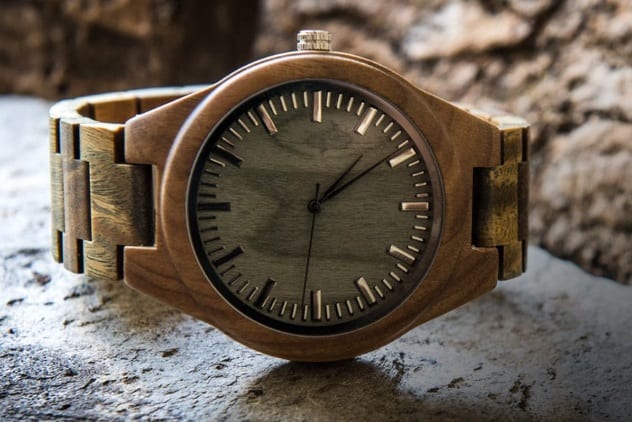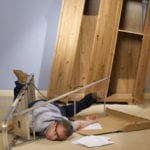 Our World
Our World  Our World
Our World  Pop Culture
Pop Culture 10 Incredible Female Comic Book Artists
 Crime
Crime 10 Terrifying Serial Killers from Centuries Ago
 Technology
Technology 10 Hilariously Over-Engineered Solutions to Simple Problems
 Miscellaneous
Miscellaneous 10 Ironic News Stories Straight out of an Alanis Morissette Song
 Politics
Politics 10 Lesser-Known Far-Right Groups of the 21st Century
 History
History Ten Revealing Facts about Daily Domestic Life in the Old West
 Weird Stuff
Weird Stuff 10 Everyday Products Surprisingly Made by Inmates
 Movies and TV
Movies and TV 10 Actors Dragged out of Retirement for One Key Role
 Creepy
Creepy 10 Lesser-Known Shapeshifter Legends from Around the World
 Our World
Our World 10 Science Facts That Will Change How You Look at the World
 Pop Culture
Pop Culture 10 Incredible Female Comic Book Artists
 Crime
Crime 10 Terrifying Serial Killers from Centuries Ago
Who's Behind Listverse?

Jamie Frater
Head Editor
Jamie founded Listverse due to an insatiable desire to share fascinating, obscure, and bizarre facts. He has been a guest speaker on numerous national radio and television stations and is a five time published author.
More About Us Technology
Technology 10 Hilariously Over-Engineered Solutions to Simple Problems
 Miscellaneous
Miscellaneous 10 Ironic News Stories Straight out of an Alanis Morissette Song
 Politics
Politics 10 Lesser-Known Far-Right Groups of the 21st Century
 History
History Ten Revealing Facts about Daily Domestic Life in the Old West
 Weird Stuff
Weird Stuff 10 Everyday Products Surprisingly Made by Inmates
 Movies and TV
Movies and TV 10 Actors Dragged out of Retirement for One Key Role
 Creepy
Creepy 10 Lesser-Known Shapeshifter Legends from Around the World
10 Things You Won’t Believe People Have Made Out Of Wood
Wood is used in the creation of lots of objects that we see around us, whether it’s the chairs that we sit on, the tables we eat at, or the shelves that we put things on. Then again, there are also plenty of objects that don’t contain any wood—at least, not usually.
It turns out that there are people who have created wooden versions of things that generally do not have a single wooden component. Often, these efforts have yielded fascinating but decidedly odd results. Here are ten of the most unlikely things people have made from wood.
10 A Scooter

The Vespa motor scooter is a common sight on the roads and has been since it was invented by the Italian Piaggio Group in the aftermath of World War II. While Italy has always been the largest market for this stylish vehicle, it has also been hugely popular in the UK since becoming associated with the “Mod” scene during the 1960s. However, although the Vespa has gone through a number of different design variations in the 70 years since it was first launched, no one had ever considered creating a wooden one until Carlos Alberto came along.
In October 2007, Alberto, a carpenter from Portugal, undertook the mind-boggling task of designing and building a functioning Vespa out of wood, which he then went on to name “Daniela.” The project took him ten months to complete, involved the use of ten different kinds of wood, and cost him €2,800.[1] We have to admit that the finished result is actually really attractive to look at, though, and is a serious work of craftsmanship.
9 Dentures

Nowadays, dentures are often made out of acrylic because it can be manipulated easily and dyed to resemble the color of gums. This wasn’t always the case, though, as at one time, people were forced to make do with rather more primitive dentures made out of wood. Wooden dentures seemingly originated in Japan, and the ancient priestess Nakaoka Tei is among those who are known to have worn dentures that were made from wood. This remained a common thing in the country as late as the 19th century. In 2008, a skillfully carved set of wooden dentures dating back to the 18th century were found by archaeologists digging at Yokkaichi, Mie Prefecture.
These carefully made munchers would only have been affordable to wealthy merchants and top-ranking samurai, though, not poor Japanese peasants.[2] On a different note, the widespread belief that former US president George Washington was one of those in the West who walked around with wooden teeth is a complete myth; his dentures were actually made out of a variety of materials, including hippopotamus ivory and bone.
8 A Book

A book made out of wood gives a whole new meaning to the phrase “log book,” and there is man who has created just such an item. Brady Whitney is an industrial engineer, and his creation, which he sought funding support for through Kickstarter, is called Codex Silenda. The book consists of five pages, which may not sound like a lot, but each of these pages had to be intricately put together from over 100 bits of wood—mainly birch and maple that he cut using a laser. The result is a mechanized puzzle on each of the pages that the readers have to actually physically interact with to be able to solve. It is not possible to move on to the next page until the solution to the current one has been found.[3]
The Codex Silenda isn’t just a puzzle book, though, as there is also a narrative featuring a hero who works for Leonardo da Vinci as an apprentice and stumbles across the Codex, which the artist has created to foil spies trying to steal his ideas. The apprentice now has to make it to the end by solving all of the puzzles before his employer gets back from a trip abroad.
7 Watches

Many people wear watches, but most will use one that is made out of materials like metal, plastic, glass, and leather. However, it is actually possible to get a watch that is made completely out of wood, and the companies that manufacture them have a purpose beyond just creating an unusual gift item. In some cases, these manufacturers work directly with environmental charities and make a commitment to planting trees for each of the watches they sell. Other businesses focus on using only wood that has been recycled and on ensuring that the patterns and individuality of each piece of wood are retained in the construction of the watches.
What is common to most of the companies that make wooden watches is that the timepieces are intended to be an environmentally friendly alternative to the more mainstream watch manufacturers.[4] We can’t always be sure that this is the case, though, so anyone who is keen to buy one for that reason should be careful to make sure that it is made from a fast-growing type of wood such as bamboo, rather than slow-growing and rare woods like rosewood or mahogany—as using any of those actually endangers these trees.
6 An Airplane

When we think of airplanes, it would be fair to say that most of us picture machines made out of metal, but a wooden one was one of the more unusual innovations to emerge from World War II. When the war was at its height, the aluminum more typically used to construct fighter planes was classified as a strategic material and relatively scarce, whereas the lightweight balsa, spruce, and plywood used in the construction of the DH.98 Mosquito were not.[5] The company that came up with the idea was de Havilland, which had previously pioneered the use of balsa and plywood for the plane fuselage with its DH.91 Albatross transport plane. The speed that this plane was capable of gave Geoffrey de Havilland the idea for a bomber that would be faster than all of the others in the air due to its being made from lightweight wood and not having machine guns built into it.
The absence of machine guns was another thing that made the Mosquito a very unusual bomber, and this also meant that war ministry officials needed a lot of persuading that it was a good idea. For that reason, the Mosquito did not enter production until late 1940, but once it was ready for action, it quickly became the plane of choice for a variety of tasks, including bombing raids, military transportation, long-range photographic work, and pathfinding. It earned the nickname “The Wooden Wonder” and caused the German aviation minister Herman Goering to go “green and yellow with envy.”
5 A Computer

A computer made out of wood sounds like something from a comedy film, but such an object does exist in reality—and just to make it even stranger, the computer’s keyboard is part of a desk. This wooden computer was made by an artist from Holland named Marlies Romberg, and he has stated that the concept behind it is a blend of the digital and the real worlds.[6] His creation is a desktop computer that has a monitor and a mouse, both made of wood, while the functioning keyboard was made by using a laser cutter to carve out each key from a desk surface. Romberg even went so far as to manufacture a USB stick to go with the computer as part of the same project, although that is made from silicon rather than wood.
As odd as the idea of a computer made from wood might seem, Romberg isn’t even the first person to create one. A craftsman based in Moscow manufactured a wooden PC monitor, keyboard, and mouse as a commissioned piece in 2007, a full two years before Romberg made his computer public—although the desk aspect of Romberg’s creation and the art concept he attached to it ensure that it has some originality.
4 Clothes

Gangsters in old crime movies used to threaten to put people in wooden overcoats, but they meant coffins, not the real thing. Apparently, one man interpreted the phrase literally, though, and thought that it sounded like a really good idea. Fraser Smith, a woodcarver from Mississippi, specializes in the carving of clothes that look real enough to wear out of blocks of wood that can weigh as much as 91 kilograms (200 lb), which he admits is a hard and time-consuming way of creating art.[7] Among the items of replica clothing that he has carved in this way are coats, T-shirts, pants, robes, and baseball caps.
Smith began making his ultra-realistic wood clothes in 1987, and they can now be found in the collections of both private art buyers and public galleries. The reason he decided to try carving detailed and exact recreations of everyday items of clothing was to explore the way we attach memories to old clothes that make us reluctant to get rid of them and that make mass-produced things into something unique and special to their owners.
3 Skyscrapers

A company in Japan called Sumitomo Forestry is aiming to build a 70-floor wooden skyscraper in Tokyo by 2041 that would be the tallest of its kind anywhere in the world. It would be constructed from a blend of 90 percent wood and ten percent steel, with the framework combining the two in a way that is designed to ensure it can withstand the earthquakes that are common there, and it would provide housing for 8,000 people. We might find the notion of building a skyscraper from wood rather than concrete and steel to be a crazy one, but, in fact, they are already out there in many of our cities. One example is the T3 building (pictured above), which is located in Minneapolis and is currently the single largest mass timber building anywhere in the US.
Architects are increasingly keen on the idea of using wood for the construction of these buildings because doing so is a lot faster than using steel and concrete and because those materials both produce carbon emissions, whereas wood absorbs carbon dioxide—making it better for the environment.[8] While we might have concerns about safety, these wooden skyscrapers are being built using specially engineered woods—generally either cross-laminated timber or laminated veneer lumber—which are made up of a network of thin layers and have much greater strength than standard wood.
2 A Light Bulb

This item is another piece of wooden weirdness that was devised by an innovative designer—in this case Barend Massow Hemmes. It is not the actual bulb itself that is made of wood but rather the outer casing that protects it, meaning that the bulb inside can be changed when it burns out, just like a normal light. The process that Hemmes used to create the outer casing involves laser cutting, similar to what was used for some of the other items on this list. Wood that is cut in that way has a slightly burned look, which gives it the resemblance to a waffle that Hemmes was aiming for when the bulb is lit inside it.
The finished piece was actually created to be a quirky and unusual lamp that can either be placed on a table or hung from a ceiling in the standard fashion. It can even be used outside if you can find somewhere to plug in the cable.[9]
1 Torpedoes

A torpedo is a self-propelled missile that moves underwater and has a warhead attached to it, designed to explode on impact, and it is generally not something that is made out of wood. However, during World War II, a converted pier at Stokes Bay, on the southwestern coast of England, was used by the RAF as a test site for weapons, including practice torpedoes. This was necessary so that the effectiveness of torpedoes dropped from planes could be monitored, but for reasons that we can all understand, the practice missiles used didn’t actually have explosive warheads attached to them.
Another thing that made these “dummy” torpedoes different from the ones used in actual combat is that some of them were made out of wood. This was confirmed when one of the many test missiles launched from Stokes Bay pier by the RAF Torpedo Development Unit was recovered from the sea there. This wooden missile is now on display at the Fleet Air Arm Museum in the UK.[10]
I am a freelance writer who currently makes short films as one half of Wardlaw Films.
Read about some more bizarre construction materials on Top 10 Artworks Made Of Humans and 10 Bizarre Objects Made From Human Skulls.








